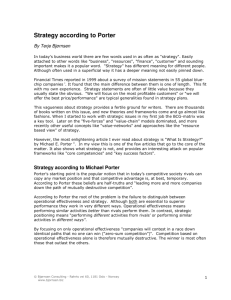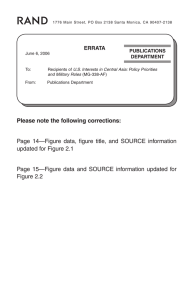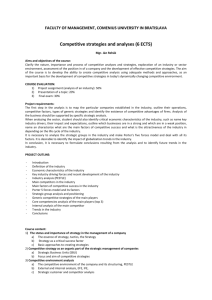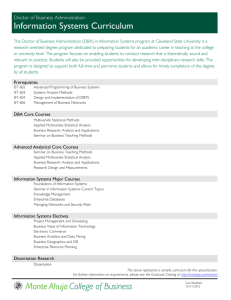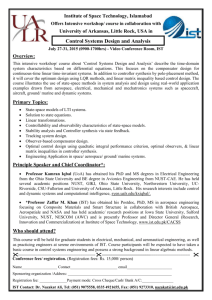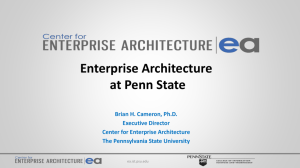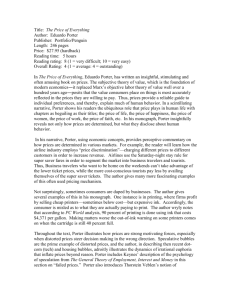Organizations and Information Systems – Economic Effects
advertisement
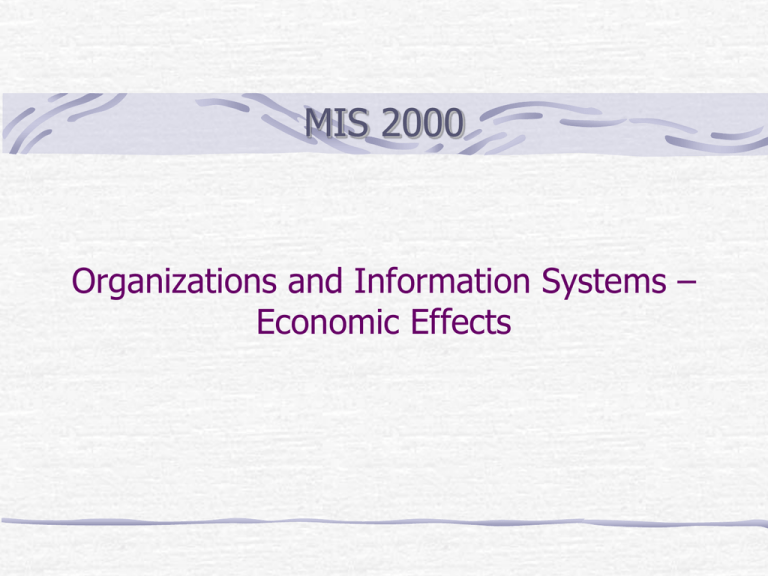
MIS 2000 Organizations and Information Systems – Economic Effects Outline Operation Efficiency and IS Porter's Value Chain Model Business Effectiveness and IS Business and IST strategy Porter's Competitive Forces Model Character (indirect) of IST impact on organizations Organizations and IS IS and Economic Effects Organizational Design (structure, processes, political, culture) INFORMATION SYSTEMS Economic Effects Efficiency of operations Organizations and IS Effectiveness of business 1 of 7 IS and Efficiency • Operation efficiency: Save time & money = work faster, cheaper • Problem with computers: While allowing for faster work on a old tasks, they may create time for: • embellishing the tasks (unnecessary additions; e.g.: more formatting) • adding odd tasks (more processing & data proliferation) • idleness • Manage time & follow efficiency benchmarks for tasks & processes • Costs savings – major way of drawing efficiency benefits of IST! Organizations and IS 2 of 7 Porter’s Value Chain Model • Model can help to determine possible savings – efficiency targets • IS should be the vehicle for reaching efficiency targets Organizations and IS 3 of 7 IS and Effectiveness Business Effectiveness – accomplishing competitive targets: New product (good or service) Differentiating characteristics of products (high quality, new features, combination of features) Positioning in market segments & increasing market share Customer service (speed, coverage, quality) Effectiveness targets usually formulated in strategic plans (business strategy) IS can help define business strategy, and should support it. Organizations and IS 4 of 7 Porter’s Competitive Forces Model SUBSTITUTE PRODUCTS & SERVICES NEW MARKET ENTRANTS THE INDUSTRY Focus THE FIRM SUPPLIERS TRADITIONAL INDUSTRY COMPETITORS Old model of competition CUSTOMERS • A firm must uses 5 forces (players) • A firm competes on product differentiation & price (efficiency assumed) • Model can help to determine competitive strategy and use IS for that (see Note) Organizations and IS 5 of 7 Efficiency vs. Effectiveness • The ideal is to accomplish both, but… • Efficiency may counter effectiveness (e.g., working faster can be at expense of quality, an aspect of effectiveness; example in Note)* • Realistic goal: Balancing efficiency and effectiveness, at least in certain aspects. • IST can help (e.g., automated checks of data input in word processors, databases, spreadsheets – both speed and data accuracy accomplished) Organizations and IS 6 of 7 Character of IS Effects • Important! IS is not a magic wand that automatically efficiency & effectiveness at the organizational level. Information System User/Worker (information, knowledge) Task Organized data Production Core Organization’s products (goods, services) measured from efficiency and effectiveness perspectives IS impact on performance is indirect: IS support professionals, managers, clerks) working on their tasks (informational aspects of tasks, or informational tasks), which support production core of an organization. • IS impact on performance is more direct: When IS used in value chain, or when IS make the production technology and the organization’s product is informational in character (mass information & entertainment media, publishing, software industry). • • Differentiate b/w support jobs vs. job-based independent businesses. ** Organizations and IS 7 of 7


![[5] James William Porter The third member of the Kentucky trio was](http://s3.studylib.net/store/data/007720435_2-b7ae8b469a9e5e8e28988eb9f13b60e3-300x300.png)
